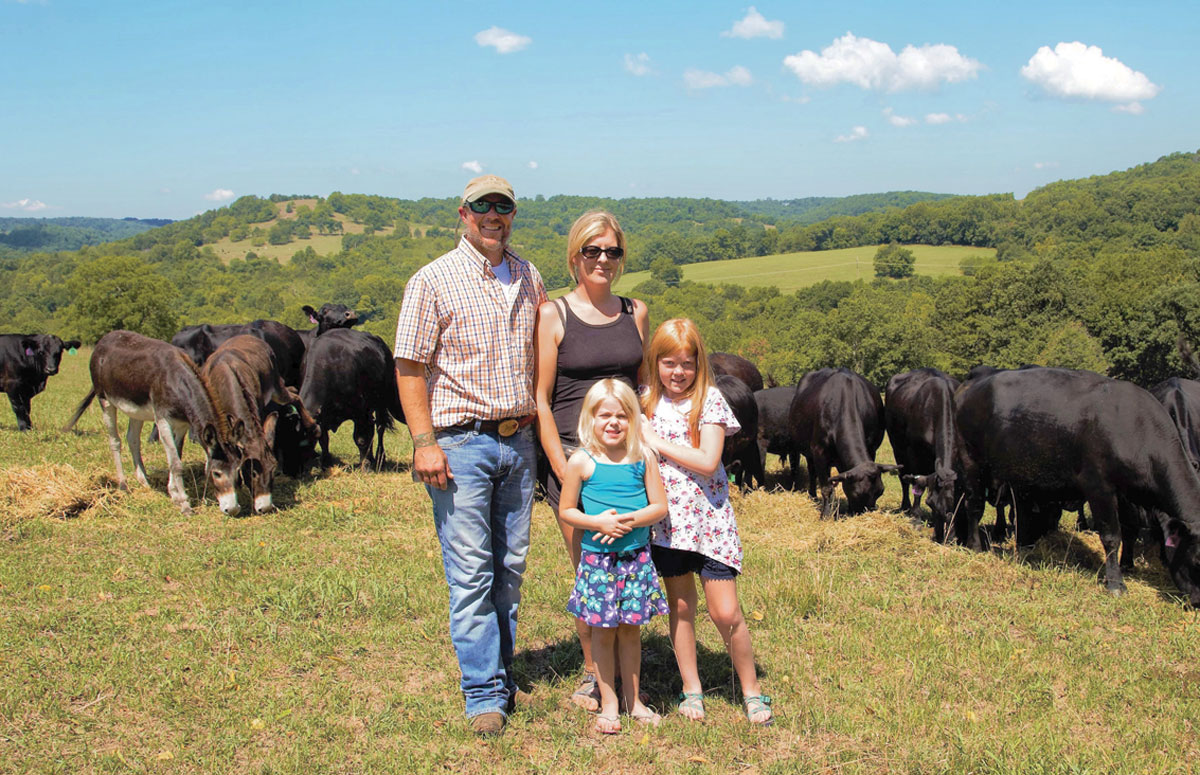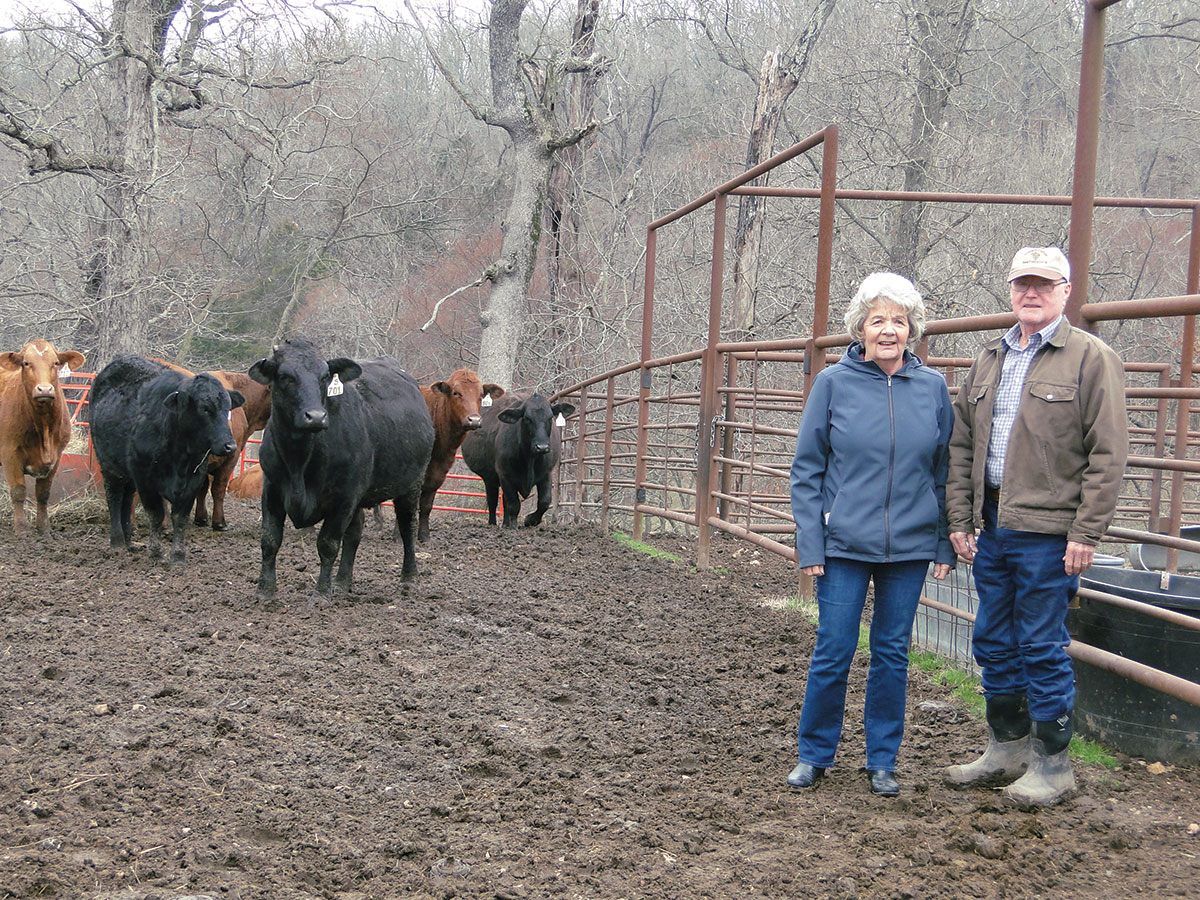
The Wilchmans literally began their operation at the roots
Billy Wilchman of Atkins, Ark., is a nurse practitioner and his wife Charlotte is a respiratory therapist. The couple work enough to keep their licenses valid but devote most of their waking hours to running their pecan farm and other business interests.
Life hit Billy hard in 2004 when he was piloting a small aircraft and caught a power line. He was seriously burned. His copilot didn’t survive.
Not long thereafter, his son Daniel was dating a girl whose grandfather had a pecan farm where Daniel often worked. He asked his seriously disheartened father if they could have their own pecan farm. Billy told his son to put it on pencil and paper. Billy and Charlotte then bought a 300-acre soybean farm in November 2004 and cleared enough land of plum thistles, junk and share-cropped soybean acres to begin planting grafted pecan saplings in February. Billy planted 2,000 trees of three different varieties that first year with the project being feasible because a man in Texas offered to sell him grafted pecan trees for $10 apiece instead of $30 if Billy would clear a lot for him, which he did.
Though Billy had lived on a 40-acre chicken farm as a child and raised his own pigs, he knew nothing about pecans. Fortunately, his first three species of the 1,000 available were suited for Arkansas’s high-humidity climate.
“Our first plot was my university, and you can tell because trees planted later look better even though they are younger,” Billy said.
Recognizing a need for knowledge, Billy attended classes at Arkansas Tech. He learned different species have different maturation times and now has 10 varieties that mature from September through Thanksgiving because harvesting 4,000 mature pecans trees at their peak is impossible for one man. He also learned the solution to grasshoppers devouring trees was prevention and what looked like a late April killing frost only meant delayed growth. He also learned grafted pecans were far superior to native ones and produce significantly larger nuts.
The growing year is labor-intensive. Pruning dead, damaged and diseased branches begins in February with a pruned tree shape resembling a Christmas tree in order to minimize wind damage and stimulate trunk growth. The goal of pruning is having upper growth a little behind root growth for optimum health. Pruning continues for one or two months, and all debris must be completely removed to prevent insect infestation.
Next comes “bud break” and an ongoing two-week cycle that lasts until harvest. The trees need to be completely sprayed with fungicide, pesticide and nitrogen which adhere to the leaves, preventing humidity issues and insect infestation in addition to fertilizing the trees. The trees are watered by 56 miles of an underground irrigation system modified from the pre-existing soybean system. Spraying is done at night to minimize evaporation and impact bugs when they are on the trees.
Also during the two-week cycle, herbicide is applied to an eight-foot wide strip containing each row of trees, which are planted in 40 feet apart. The grass area between strips is fertilized and harvested three to four times a year, with the yield of 300 round bales per cutting.
“If it ain’t weeds, it’s hay, and if it ain’t hay, it’s bugs; and 16-hour days are the norm rather than the exception,” Billy quipped.
Harvests consists of shaking the trees to release the nuts. Next comes a tractor that both blows and sweeps the nuts into two windrows where they are picked up by a harvester, which blows air with sufficient force to remove most debris before and the nuts are dumped into a drum. Those nuts are then cleaned by high pressure air that removes the remaining debris and empty shells before filling 50-pound bags with quality nuts that the Wilchmans then process themselves at a rate of 500 shells a minute. Two pounds of harvested nuts produces 1 pound of packaged nuts. The nuts are sold at nearby markets, by orders from word-of-mouth or off their Facebook page and are sent as far as France, Myanmar and Venezuela.
Through the years, Billy and Charlotte have diversified their income. In addition to selling wood chips and hay, they raise 10 varieties of Muscadine grapes with a total of 100 vines sold in gallon increments pre-picked or on a pick your own basis. Another new income stream, raising bees and selling honey, is the result of customer demand. Additionally, they sell pre-grafted pecans saplings grown from nuts they plant. Demand is high due to severe damage to high production states like Georgia with hurricane damage and Texas, a victim of drought.
Two of the most recent income streams come from Charlotte Teresa Plantation and began with the construction a large plantation-style house. The homey and comfortable interior contains five guest bedrooms and bathrooms as a bed and breakfast. Connected to it is an event center.
The Wilchmans are just hitting their stride and plan to develop a busy agri-tourism business with a senior center soon bringing a busload as a surprise destination. Billy and Charlotte want to add school groups and perhaps a fall pecan festival, especially since the area holds 20,000 trees within a 5-mile radius making it likely heart of the Arkansas pecan industry.
“We love our new life. However, I don’t pilot anymore. I keep in mind the Lord said, ‘Lo {low} I am with you always,’ so I stay on the ground,” Billy grinned and said.






